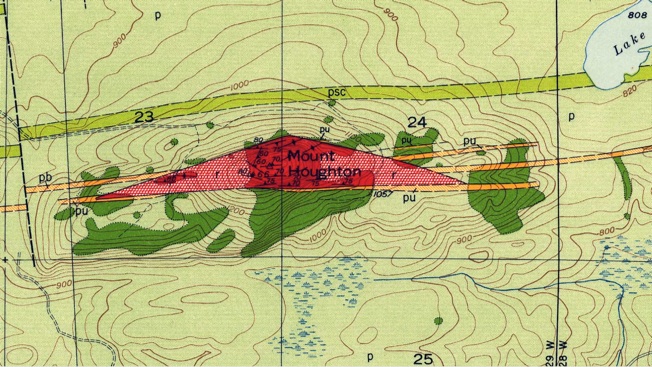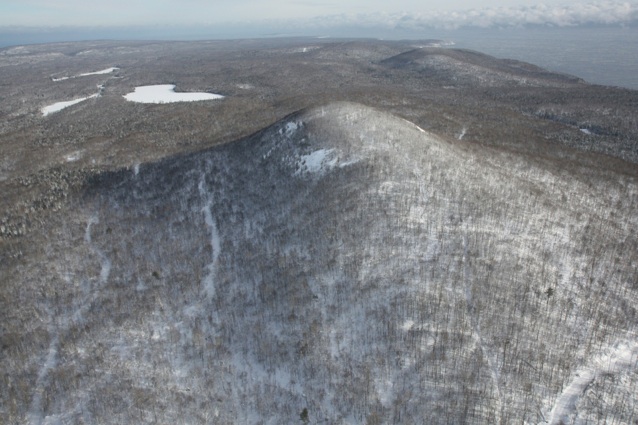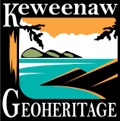

A classic volcanic dome, Mt Houghton exhibits flow banding and provides the most spectacular example of rhyolite volcanism in the Portage Lake Volcanics. It also provides visitors an unforgettable view to the south and east. Access is either via the Mandan Road off of US 41, or the Smith’s Fisheries Road. Blue markers on the map show junctions where cars can turn toward the “mountain”. The last park is a hike.

Highland Copper Company is actively exploring this area.
Cornwall, 1954, Bedrock Geology of the Lake Medora Quadrangle, Michigan. USGS

Mt Houghton from west, by Neil Harri
excerpt from: GEOLOGIC MAP OF THE KEWEENAW PENINSULA AND ADJACENT AREA, MICHIGAN
By William F. Cannon and Suzanne W. Nicholson
Several small extrusive rhyolite domes occur in the stratigraphic interval above the Bohemia Conglomerate. Ashfall units are found locally at the base of the domes. Stratigraphically below the Bohemia Conglomerate are several intrusive rhyolite bodies which either cut across basalt flows or form sills between flows. Some may be feeders to overlying rhyolite domes. Geochemically these intrusive and extrusive rhyolites are high silica and are termed Type I (Nicholson, 1992). They are typically sparsely porphyritic with small plagioclase and quartz phenocrysts. Near the town of Copper City, a single intrusive body of rhyolite is distinguished from Type I by the presence of coarse phenocrysts of quartz and feldspar and compositions similar to barren topaz rhyolite. This has been termed Type II rhyolite (Nicholson, 1992).


